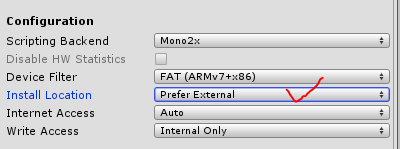編輯:關於Android編程
本文實例講述了Android編程實現使用Intent傳輸包含自定義類的ArrayList。分享給大家供大家參考,具體如下:
前言
之前項目中通過Intent只是傳輸簡單的字符串,這次因為需要在前一個頁面聯網獲取對象數據,然後在下一個頁面使用,所以考慮到使用Intent傳輸包含自定義類的ArrayList。
Serializable
Java的對象序列化指的是將那些實現了Serializable接口的對象轉換成一個字節序列,並且能在需要的時候再將這個字節序列完全恢復為之前的對象。
想實現對象的序列化,需要實現java.io.Serializable接口(注意,這個接口只是一個標記接口,並沒有具體需要override的方法)。當然,你也可以自己實現對象的序列化,但是我認為既然Java提供了這麼一套對象序列化的機制,我們最好還是使用官方提供的方法。
Example
創建一個簡單對象,並且實現Serializable接口
package javastudy;
import java.io.Serializable;
public class Person implements Serializable {
private static final long serialVersionUID = -6470574927973900913L;
private String firstName;
private String secondName;
// example for transinet
private transient String noSerializableString;
public Person(String firstName, String secondName, String noSerializableString) {
super();
this.firstName = firstName;
this.secondName = secondName;
this.noSerializableString = noSerializableString;
}
public String getFirstName() {
return firstName;
}
public void setFirstName(String firstName) {
this.firstName = firstName;
}
public String getSecondName() {
return secondName;
}
public void setSecondName(String secondName) {
this.secondName = secondName;
}
public String getNoSerializableString() {
if (noSerializableString != null) {
return noSerializableString;
} else {
return "";
}
}
public void setNoSerializableString(String noSerializableString) {
this.noSerializableString = noSerializableString;
}
public String toString() {
return "Person [ first name :" + getFirstName() + ", second name :" + getSecondName() + ", no serializable :"
+ getNoSerializableString() + "]";
}
}
再寫一個類,用於實現對象的序列化和反序列化
package javastudy;
import java.io.FileInputStream;
import java.io.FileOutputStream;
import java.io.IOException;
import java.io.ObjectInputStream;
import java.io.ObjectOutputStream;
public class TestSerializable {
public static void main(String[] args) {
Person person = new Person("Wang", "Zhengyi", "Genius");
String fileName = "/tmp/person.out";
// save object to file
FileOutputStream fos = null;
ObjectOutputStream out = null;
try {
fos = new FileOutputStream(fileName);
out = new ObjectOutputStream(fos);
out.writeObject(person);
out.flush();
} catch (Exception e) {
e.printStackTrace();
} finally {
if (fos != null) {
try {
fos.close();
} catch (IOException e) {
e.printStackTrace();
}
}
if (out != null) {
try {
out.close();
} catch (IOException e) {
e.printStackTrace();
}
}
}
// read object from file
FileInputStream fin = null;
ObjectInputStream in = null;
try {
fin = new FileInputStream(fileName);
in = new ObjectInputStream(fin);
Person p = (Person) in.readObject();
System.out.println(p);
} catch (Exception e) {
e.printStackTrace();
} finally {
if (fin != null) {
try {
fin.close();
} catch (IOException e) {
e.printStackTrace();
}
}
if (in != null) {
try {
in.close();
} catch (IOException e) {
e.printStackTrace();
}
}
}
}
}
Intent傳輸包含自定義類的ArrayList
之所以之前介紹了Serializable,是因為這是實現Intent傳輸的前提,ArrayList包含的自定義類必須實現Serializable接口才能通過putSerializable()方法被傳遞。
還是用上面的Person類作為自定義的類,則第一個傳遞ArrayList的Activity關鍵代碼如下:
// Intent Creation and Initialization
Intent passIntent = new Intent();
passIntent.setClass(MainActivity.this, SecondaryActivity.class);
// Create custom class Object
Person p1 = new Person("Wang", "Zhengyi", "first");
Person p2 = new Person("Chen", "Shan", "second");
// Create Array List of custom Class and add the Created object
ArrayList<Person> aListClass = new ArrayList<Person>();
aListClass.add(p1);
aListClass.add(p2);
// Create a Bundle and Put Bundle in to it
Bundle bundleObject = new Bundle();
bundleObject.putSerializable("key", aListClass);
// Put Bundle in to Intent and call start Activity
passIntent.putExtras(bundleObject);
startActivity(passIntent);
第二個接收ArrayList的Activity關鍵代碼如下:
try{
// Get the Bundle Object
Bundle bundleObject = getIntent().getExtras();
// Get ArrayList Bundle
ArrayList<Person> classObject = (ArrayList<Person>) bundleObject.getSerializable("key");
Retrieve Objects from Bundle
for(int index = 0; index < classObject.size(); index++){
Person person = classObject.get(index);
Toast.makeText(getApplicationContext(), person, Toast.LENGTH_SHORT).show();
}
} catch(Exception e){
e.printStackTrace();
}
更多關於Android相關內容感興趣的讀者可查看本站專題:《Android開發入門與進階教程》、《Android調試技巧與常見問題解決方法匯總》、《Android基本組件用法總結》、《Android視圖View技巧總結》、《Android布局layout技巧總結》及《Android控件用法總結》
希望本文所述對大家Android程序設計有所幫助。
 用Android MenuInflater創建菜單項的方法步驟
用Android MenuInflater創建菜單項的方法步驟
之前在一篇文章中已經講過了菜單項的創建方法,但是那種方法效率較低,維護不易,現在實現另一種方法創建菜單。MenuInflater,通過此類我們可以輕松的創建菜單項,具體步
 Android BLE學習筆記
Android BLE學習筆記
前言:本文主要描述Android BLE的一些基礎知識及相關操作流程,不牽扯具體的業務實現,其中提供了針對廣播包及響應包的解析思路,希望對正在或即將面臨Android B
 Unity3D之導出的Apk安裝失敗
Unity3D之導出的Apk安裝失敗
最近用Unity3D導出Apk到手機上出現的問題,開始可以正常安裝到手機上。然而在我將導出的Apk在電腦的模擬機運行了幾次之後,再導入到手機上卻一直安裝失敗。後來在Pla
 從搶紅包插件談AccessibilityService
從搶紅包插件談AccessibilityService
微信紅包自打出世以來就極其受歡迎,搶紅包插件可謂紅極一時.今天,我們重新談談搶紅包插件的哪些事兒.本質上,搶紅包插件的原理不難理解,其過程就是在收到紅包時,自動模擬點擊.